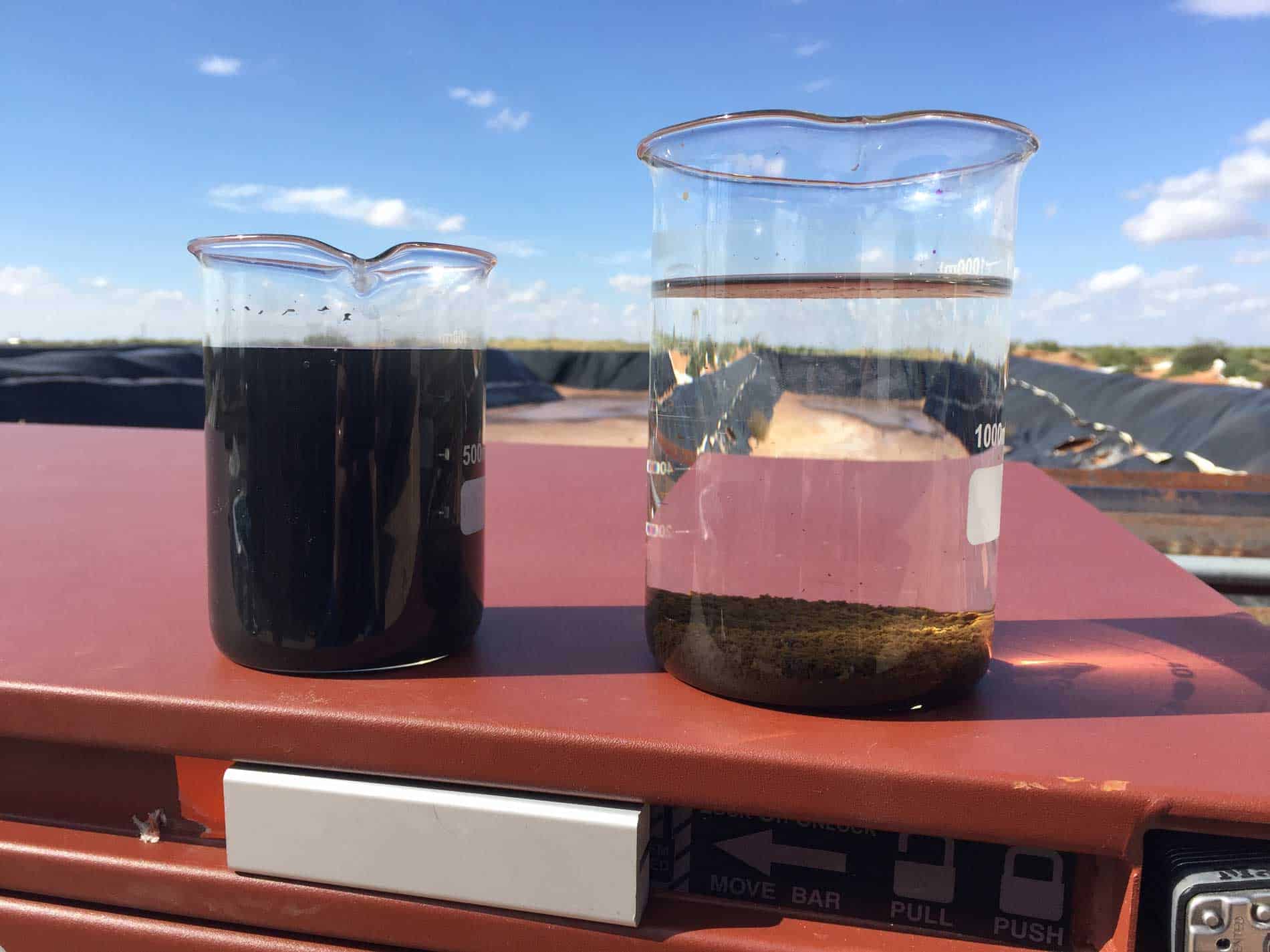Biocide Residual Effectiveness Test
The Biocide Residual Effectiveness Test is a critical service within the realm of produced water and process water analysis in the oil & gas sector. It helps ensure that biocides used in water treatment systems are effective at the levels specified for their intended purpose, thereby protecting against microbial contamination.
Biocides play a crucial role in maintaining the integrity of oil and gas production facilities by preventing biofilm formation and inhibiting microbial growth. However, as these chemicals degrade over time or with repeated use, it is essential to monitor their residual levels to ensure they continue to provide adequate protection against microorganisms.
The test involves several stages designed to mimic real-world conditions encountered in oil & gas operations. Initially, water samples are collected from production facilities and treated according to standard protocols. Following treatment, the biocide concentration is measured both before and after exposure to various environmental stressors such as temperature changes or contact with different materials.
One of the key aspects of this test is understanding how long a particular biocide remains effective under realistic operational conditions. This information allows operators to make informed decisions about when to reapply or replace treatments, thus optimizing resource use while maintaining safety standards.
The results from these tests are reported according to international standards (ISO 12245:2009), which provide clear guidelines on methods for determining biocide efficacy. By adhering to these recognized protocols, laboratories ensure that their findings are reliable and comparable across different regions and facilities.
Understanding the residual effects of biocides is not only important from an operational standpoint but also has significant environmental implications. Properly managed water treatment processes reduce the risk of releasing harmful substances into local ecosystems, contributing to sustainable practices within the industry.
In summary, the Biocide Residual Effectiveness Test serves as a vital tool for ensuring optimal performance and safety in oil & gas operations involving produced water and process water management. Through precise measurement and analysis techniques, this service helps maintain effective biocide concentrations, supporting both operational efficiency and environmental responsibility.
| Application | Description |
|---|---|
| Production Facilities | Monitoring biocide effectiveness in treating produced water to prevent microbial growth. |
| Pipeline Systems | Evaluating the impact of biocides on pipeline integrity and preventing biofouling. |
| Storage Tanks | Detecting potential breaches in protection against microorganisms within storage tanks. |
Why It Matters
The importance of conducting the Biocide Residual Effectiveness Test cannot be overstated, especially given the critical role biocides play in protecting oil & gas production facilities from microbial contamination. Effective biocide management ensures prolonged operational efficiency by minimizing downtime due to equipment failures caused by biofilm buildup.
- Reduces downtime associated with cleaning and maintenance of equipment.
- Promotes longer-lasting protection against microorganisms, enhancing overall facility longevity.
- Avoids costly repairs or replacements resulting from severe microbial infestations.
In addition to these operational benefits, proper biocide management contributes significantly to environmental conservation efforts within the oil & gas industry. By preventing the release of potentially harmful substances into nearby ecosystems, operators demonstrate their commitment to sustainable practices and regulatory compliance.
From a broader perspective, ensuring accurate measurement of biocide residuals fosters trust among stakeholders – including regulators, investors, and community members – regarding the responsible handling of resources used during oil & gas extraction processes.
Industry Applications
- Petrochemical plants requiring regular monitoring of water treatment systems for biofilm prevention.
- Offshore drilling platforms needing continuous assessment of biocide concentrations in produced waters.
- Onshore production facilities seeking to optimize biocide application schedules based on real-time data.
The Biocide Residual Effectiveness Test finds particular relevance across various segments within the oil & gas sector. Its application extends beyond traditional drilling sites, encompassing numerous aspects of facility maintenance and environmental protection.
Use Cases and Application Examples
- Case Study 1: A major petrochemical plant experienced recurring issues with biofilm formation in their produced water treatment system. After implementing regular biocide residual testing, they were able to identify optimal application times for biocides, reducing maintenance costs by over 30%.
- Case Study 2: An offshore drilling platform reported increased microbial activity despite ongoing biocide treatments. Through detailed analysis conducted via the Biocide Residual Effectiveness Test, it was discovered that certain areas were receiving insufficient dosages due to localized flow patterns. Adjustments were made accordingly, leading to significant improvements in water quality and reduced risks of contamination.
These examples illustrate how precise monitoring through biocide residual effectiveness testing can lead to tangible benefits in terms of cost savings, operational efficiency, and environmental responsibility.
| Test Parameters | Description |
|---|---|
| Biodegradation Rate | Determining the rate at which biocides degrade under specific conditions. |
| Contact Time | Evaluating the duration required for effective biocide action against microorganisms. |





